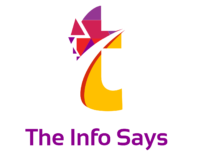Navigating the Shifting Sands of Digital Marketing: Adapting to Google’s Algorithm Updates

In the ever-evolving landscape of digital marketing, Google’s algorithm updates often stand as the tectonic shifts that can either uplift your online presence or bury it beneath pages of search results. Understanding and adapting to these changes is not just essential; it’s critical to sustaining and improving your online visibility, user engagement, and ultimately, your ROI. In this comprehensive guide, we’ll dive deep into how marketers can stay ahead of the curve, ensuring their strategies align with the latest in Google’s search optimization criteria.
Deciphering Google’s Intent
At its core, Google’s primary objective is to enhance user experience, presenting the most relevant, high-quality content that matches the searcher’s intent. Every algorithm update is a step closer to this goal, making search results more personalized, accurate, and helpful. But what does this mean for marketers?
Firstly, it’s essential to understand the “why” behind each update. While Google might not always provide a detailed blueprint of their algorithm changes, a careful analysis of the updates—considering factors like the types of websites that gained or lost visibility—can offer valuable insights into what Google is prioritizing.
Content is King, Context is Queen
Content has always been the linchpin of SEO, and its kingdom only grows with every update. However, the context now plays a vital role in ensuring that your content not only reaches your audience but resonates with them. Here are a few steps to ensure your content strategy remains on point:
- Quality Over Quantity: Google’s sophisticated algorithms can distinguish between high-quality content and keyword-stuffed pages. Focus on creating informative, engaging content that provides value to your audience.
- E-A-T Principle: Expertise, Authoritativeness, and Trustworthiness (E-A-T) have become critical yardsticks for content evaluation. Ensure that your content and its creators are recognized as reputable sources within your niche.
- User Intent Optimization: Align your content with the myriad of user intents, from informational to transactional queries. Tailor your content to answer specific questions, solve problems, or fulfill needs.
Technical SEO and User Experience (UX)
While content takes the front seat, technical SEO and UX aren’t far behind. Google’s updates increasingly factor in site performance and user behavior metrics, such as page load times, mobile-friendliness, and secure browsing. Incorporating these elements into your digital strategy is no longer optional but a necessity. Tools like Google’s PageSpeed Insights and Core Web Vitals report can help you assess and improve your site’s performance.
The Role of AI and Machine Learning
Google’s reliance on artificial intelligence (AI) and machine learning algorithms means that SEO strategies need to be more nuanced than ever. These technologies allow Google to understand and interpret complex user queries better, making it essential for marketers to focus on semantic search and the natural language processing capabilities of their content.
Staying Informed and Agile
Staying ahead in the game requires keeping an ear to the ground for the latest updates and trends. Follow authoritative SEO news sources, participate in digital marketing communities, and constantly monitor your website’s performance metrics for any signs of change in your search rankings.
In conclusion, Google’s algorithm updates serve as both challenges and opportunities for digital marketers. By focusing on creating high-quality, user-centric content, optimizing for technical SEO and UX, and leveraging the latest in AI and semantic search, marketers can navigate the complexities of SEO with confidence. Remember, the goal is not just to play by the rules but to anticipate them, ensuring your digital marketing strategies are not just reactive but proactive, keeping you one step ahead in the digital marketing realm.
